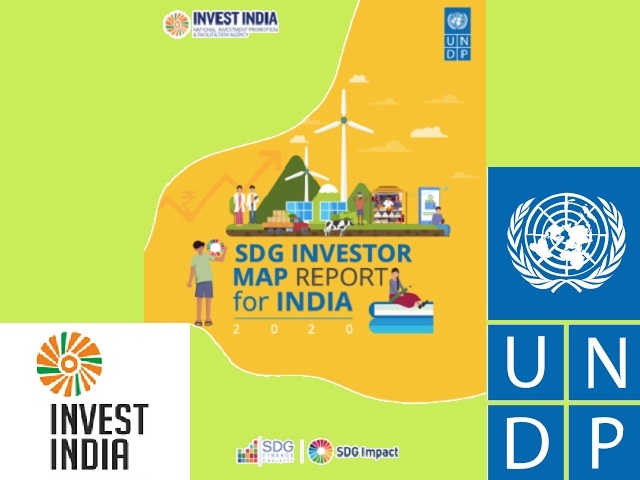
Due to the Covid-19 pandemic, the Sustainable Development Goals (SDGs) financing gap has widened by an estimated USD 400 billion in developing countries like India, adding to the pre-Covid-19 shortfall of USD 2-2.5 trillion per annum, according to a new publication by UNDP and Invest India.
UNDP’s SDG Finance Facility and Invest India, the investment promotion arm of the Government of India, have released the ‘SDG Investor Map for India’ laying out 18 investment opportunities areas (IOAs) and 8 white spaces (areas of potential) to help India push the needle forward on sustainable development.
IOAs have been identified across SDGs related to six priority sectors like education, healthcare, agriculture, financial services, renewable energy and sustainable environment. Of the 18 IOAs identified, 10 are already mature investable areas that have seen robust private equity and venture capital activity, and feature companies that have been able to unlock scale and demonstrate profitability. The remaining eight IOAs are emerging opportunities, which have seen traction from early-stage investors, says UNDP.
Nearly 50 per cent of the shortlisted IOAs have historical investments that have yielded IRRs (internal rate of return) in excess of 20 per cent. While 84 per cent of the IOAs have investment timeframes ranging from the short term (less than 5 years) to the medium-term (between 5- 15 years), as per the map, adds UNDP.
Shoko Noda, Resident Representative, UNDP India, says, “The Map comes at a critical time for India. With the emergence of the COVID-19 pandemic, the financing gap for the SDGs in India has only widened further and decades of development progress is nearly on the verge of reversal. Investing in the SDGs at this point is crucial to ‘Building Back Better’ and making the economy and our societies more resilient and sustainable. Enhanced productivity, technology adoption and increased inclusion are all critical factors that this map uses to identify the most attractive sectors for investors.”
Invest India MD & CEO Deepak Bagla adds: “India occupies a key role in determining the success of the SDGs, globally. This initiative is an instrumental stride in India’s development trajectory, and I believe it couldn’t have come at a better time. We hope our data-backed research and insights serve as useful blueprints to understand how best the SDG financing gap can be narrowed in India.”
Pointing out that it is not the responsibility of the government alone, Dr. Rajiv Lall, Member, Steering Committee, SDG Impact & Co-Chair, SDG Finance Facility platform, says in his foreword to the publication: “Businesses and investors are increasingly being held accountable for not just profit outcomes but also their contributions to communities and the environment. While there is an increase in investments that target a double or triple bottom line, the efforts are not commensurate to create the tectonic shifts that are needed as we embark on the ‘Decade of Action’ to achieve the 2030 agenda.”
Amitabh Kant, Chief Executive Officer, National Institution for Transforming India (NITI Aayog), adds in his message: “The SDG Investor Map recognises the progressive strides taken by the country in creating an enabling environment for investments. SDG-aligned investments in conjunction with these enabling and transformative reforms have the potential of accelerating progress in realising the 2030 agenda as we step into the ‘Decade of Action’.
The development pathway that India chooses will set an example for other emerging nations and determine the achievement of global environmental and social targets. Whilst the government continues to show strong support for the SDGs and a sustainable recovery, mobilizing this kind of capital and supporting the on-ground innovation needed to meet the SDG targets by 2030, requires the collective efforts of the public and private sector transition from short-term recovery to long-term sustainability, says UNDP.
The map is expected to help public and private sector stake-holders direct capital towards IOAs and areas of potential that can contribute to the nationally determined sustainable development needs of the country, adds UNDP.
The map has been developed through a comprehensive process that included extensive consultations with a number of leading PE/ VC firms, development finance institutions, impact investors, independent think tanks and government organisations.
